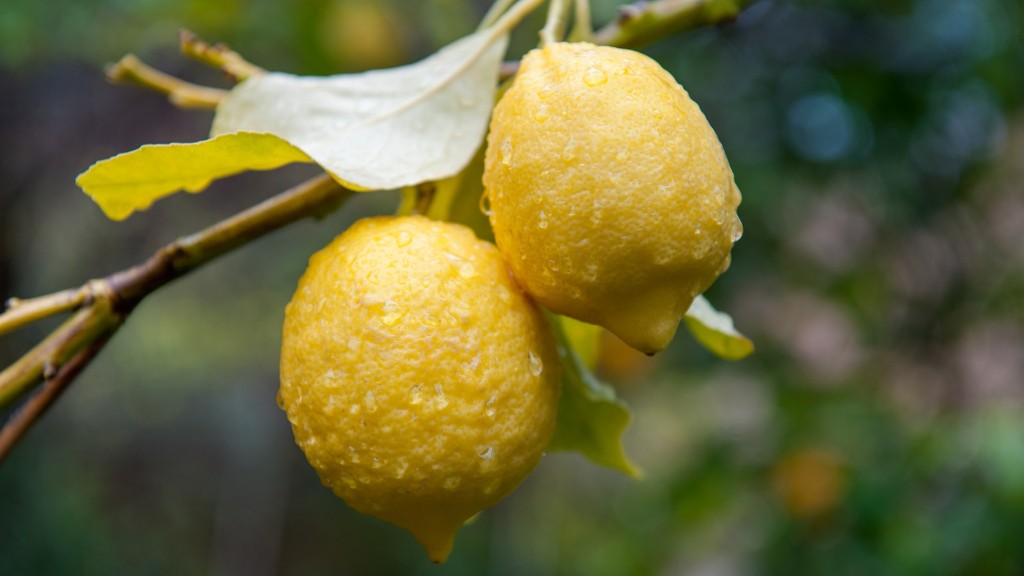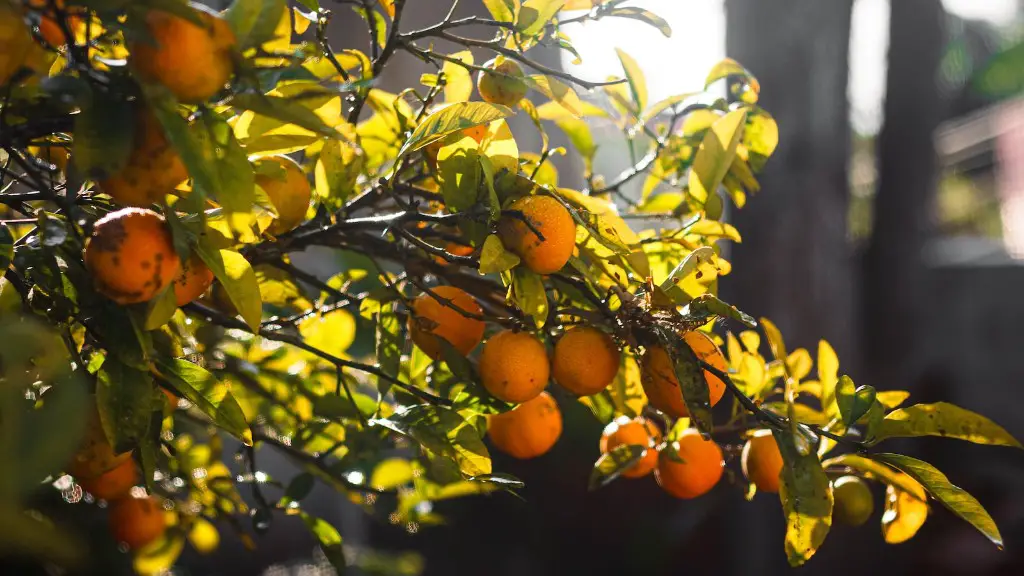As a certified horticulturalist, I have been asked many times why a lemon tree does not produce flowers. While there are some rare cases of seasonal or extreme weather conditions that can inhibit flowering, the more common reason that a lemon tree may not flower is poor nutrition. In order to ensure that your lemon tree produces enough flowers to create fruit, there are certain nutrients that it must have in order to flourish.
In order to identify if nutrition is the cause of your lemon tree’s flowerless state, the first step is to make sure the pH of the soil is between 6.0-7.0. If it is not, then the soil must be amended. The next step is to make sure the tree is receiving adequate amounts of nitrogen, potassium, and phosphorus. If these three essential macronutrients are not present in the soil, then your lemon tree is likely not getting the necessary nutrients in order to produce flowers.
Once you’ve made sure the soil pH is in the desired range, you can think about applying a fertilizer with the necessary macronutrients. Fertilizers used for lemon trees often consist of a combination of nitrogen, phosphorus, and potassium. Additionally, micronutrients such as magnesium, boron, zinc, and iron can also be helpful. Make sure to consult a local extension office for specific application recommendations for your area.
Additionally, make sure to water your lemon tree adequately. While lemon trees can tolerate some drought, they need at least 1-2 inches of water per week during the growing season. Too much water can lead to root rot, so make sure to check the soil moisture before watering. Lastly, you may need to prune your lemon tree in order to improve airflow and reduce disease pressure, as well as help increase flower production.
Environmental conditions affecting lemon tree flowering
In addition to proper nutrition, favorable environmental conditions are necessary for lemon trees to produce flowers. The ideal temperature range for lemons is between 65-85 degrees Fahrenheit, with a maximum of 95. When the temperature is too extreme, the tree may delay flowering or even cease flowering altogether. Additionally, lemon trees prefer a lot of direct sunlight, at least 8-10 hours per day. Make sure to avoid shading your lemon tree by fences, buildings, and other trees.
It is also important to note that lemon trees need a period of winter dormancy in order to produce fruit. When temperatures are below 55 degrees Fahrenheit for several weeks and days, this will trigger dormancy and the tree will be more likely to flower and produce later on in the spring.
Lastly, you should also make sure there is enough space around the tree for air circulation. One of the most common diseases of citrus trees, citrus canker, is most likely to thrive in moist conditions where there is not adequate air circulation. Pruning the tree regularly can help increase air circulation and reduce the risk of infection.
Disease and pests affecting lemon trees
Disease and pests can be some of the most difficult threats to your lemon tree’s production of flowers and fruit. The most common diseases in citrus are caused by fungi and bacteria, such as citric canker, citrus leaf miner, and citrus greening. Young trees are especially susceptible, so make sure to replace any diseased trees quickly. Additionally, make sure to inspect your tree regularly for pests, such as aphids and fruit flies. If you find any pests, try to attract beneficial insects, such as ladybugs and spiders, to control them organically.
In order to protect your tree from diseases and pests, make sure to avoid over fertilizing and practice basic maintenance, such as removing any decaying fruit from the tree and pruning dead or diseased branches. Finally, it is recommended to use a fungicide and an insecticide if you spot any signs of severe pest or disease activity.
Lack of pruning affecting lemon tree flowering
Pruning is one of the most important steps to ensure that your lemon tree produces enough flowers. Not only does pruning help remove any dead leaves or branches that can become home to insects or disease, but it also reduces the size of the tree and increases the amount of light and air circulation to the flowers. Pruning also allows the tree to put its energy into producing flowers, instead of growing more branches or leaves.
The best time to prune your lemon tree is in the late winter, just before the growth period begins. Begin by thinning out the new growth with sharp bypass shears or pruning scissors. Remove any dead or diseased branches as well as any stems that are too low to the ground or crossing over each other. Make sure to also remove any suckers that appear at the base of the trunk, which can rob the tree of valuable energy.
Finally, make sure to cut back the end of branches at least 6-12 inches from the ends. This will help prevent any overcrowding of foliage and promote a more open canopy so that light and air can reach the flowers. If you are dealing with a mature tree, it is always best to consult a certified arborist for pruning advice.
Lack of pollination affecting lemon tree flowering
Pollination is one of the most important factors for getting your lemon tree to produce flowers. Citrus are self-pollinating, so the only thing you need to do is make sure that there is adequate pollinator activity in your area. You can attract pollinators to your lemon tree by planting native pollinator-friendly plants or providing a water source. Additionally, you may consider using supplemental pollination if you do not have enough pollinators in your area.
For supplemental pollination, the most efficient way is to use a paintbrush. Pollen can be collected from the male blooms of the tree and then gently brushed onto the female blooms. Make sure to apply the brush quickly and gently so as not to damage the delicate petals. Keep in mind that only fresh pollen will germinate, so make sure to do this daily if needed.
If you’re considering using an artificial or mechanical vector instead of a paintbrush, it is generally discouraged. This can be damaging to the tree, especially to the delicate petals. In general, if you want your lemon tree to flower, make sure to attract pollinators and practice supplemental pollination if needed.
Lack of nutrients affecting lemon tree flowering
In order for your lemon tree to produce flowers, it needs to have adequate access to macronutrients and micronutrients. Macronutrients are nitrogen, phosphorus, and potassium, and micronutrients are calcium, magnesium, iron, boron, zinc, and manganese. If your tree does not have access to any of these essential nutrients, then it will not be able to produce flowers.
In order to make sure your lemon tree is getting the necessary nutrients, it is best to have your soil tested periodically. This will help you identify any deficiencies in nutrients and amend your soil accordingly. Additionally, if you want to ensure your tree receives adequate amounts of nutrients, consider using a fertilizer with all of the necessary macronutrients and micronutrients. Make sure to consult a local extension office for specific application recommendations for your area.
Finally, it is also important to remember that pH plays an important role in the availability of nutrients. The ideal pH for lemon trees is between 6.0-7.0. If the pH is higher or lower, certain nutrients may not be available even if they are present in the soil.


